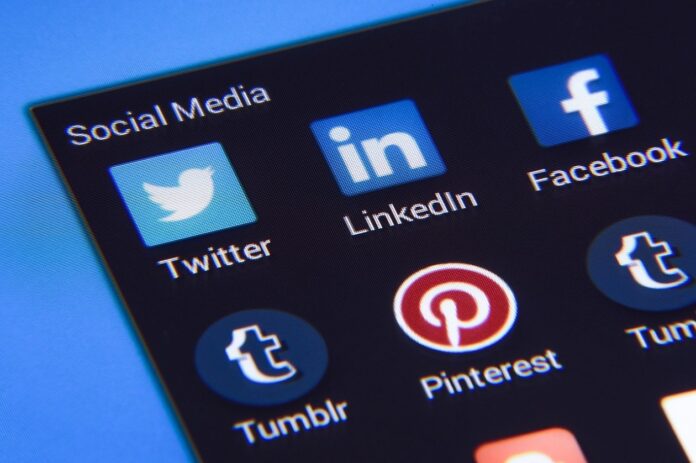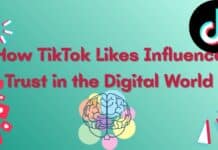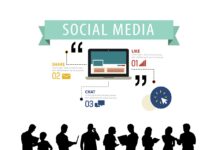What is social media monitoring?
Companies can’t afford to miss out on what people are saying about them through social media. Social media monitoring is a key strategy that allows brands to maintain contact with the conversations, needs, and perceptions of the brand as they happen, making it an essential part of effective social media management.
If you monitor social media, you’d better see product reviews, customer service complaints, or even just brand mentions to know your audience is happy, needing help, or to find ways to improve the product/service.
Social media monitoring vs. social listening
Social media monitoring and social media listening are frequently misunderstood and equated to be the same action, although they are two separate processes that are two separate actions:
– Social media monitoring is going to tell you what people are saying about your brand.
– Social listening is going to tell you why they are saying it.
With monitoring, brands are communicating with customers in real-time, addressing issues, or engaging in specific conversations. Listening provides a broader, strategic view, helping brands identify trends, address customer needs, and make larger business decisions.
Social Monitoring: Collect data ➔ Respond to comments ➔ Report insights.
Social Listening: Collect insights ➔ Understand sentiment ➔ Improve business decisions.
These processes work in conjunction with each other, filling a unique role within the bigger picture of your social media strategy, and monitoring usually focuses on connecting to the audience and responding quickly.
Benefits of social media monitoring
Social media monitoring offers a wide range of benefits that positively impact your brand, customers, and overall strategy. Let’s explore:
1. Boost brand awareness
By responding promptly to customer mentions, even indirect ones, you demonstrate attentiveness and humanize your brand. Engaging with your audience organically — outside of sponsored posts or ads — creates memorable touchpoints that stick in customers’ minds.
Example: Wendy often responds to compliments and casual mentions, creating lasting impressions and increasing brand recall.
2. Understand audience sentiment
Monitoring helps you stay tuned to shifts in how your audience feels about your brand. Unlike formal surveys, social media gives you unfiltered, real-time insights into customer emotions, which can change rapidly based on even minor experiences.
Tip: Context is key. Don’t just look at the sentiment score, dig into why the social media sentiment is positive, neutral, or negative.
3. Maximize social media campaign insights
Beyond basic analytics, social media monitoring captures candid reactions to your marketing campaigns. This qualitative feedback enriches your data, helping you refine future strategies.
Example: A travel influencer might post a TikTok video showcasing an Airbnb stay without tagging Airbnb directly. Monitoring ensures you don’t miss this free publicity and feedback.
4. Address social media crises quickly
When issues arise, time is critical. Monitoring allows brands to detect and respond to brewing crises before they escalate. Early detection can turn potential disasters into opportunities to show transparency and commitment to customer satisfaction.
5. Find new influencers and brand advocates
Not all loyal fans or influencers tag brands when they post about them. Monitoring uncovers emerging advocates you might otherwise miss, helping you build relationships with potential brand ambassadors.
Example: A micro-influencer posts about their biking experience using a brand’s product without tagging the brand’s main page, but monitoring tools can still capture it.
Who should use social media monitoring?
Social media monitoring is valuable across many departments within an organization. Here’s how different teams can leverage it:
1. Marketing and brand managers
– Track campaign reach, sentiment, and engagement.
– Adapt messaging based on real-time feedback.
– Maintain consistent brand voice across platforms.
2. Customer service teams
– Quickly respond to customer complaints and queries.
– Improve customer satisfaction through prompt service.
– Monitor preferred channels for real-time assistance.
3. Public relations (PR) professionals
– Manage the brand’s public image.
– Address negative publicity before it escalates.
– Track the impact of PR campaigns and press coverage.
4. Sales teams
– Identify potential leads and customer pain points.
– Personalize outreach based on observed conversations.
– Stay ahead of competitor strategies by monitoring industry chatter.
5. Product development teams
– Gather unsolicited feedback on products.
– Identify opportunities for improvements or innovations.
– Prioritize feature development based on real-world needs.
Key metrics for social media monitoring
Tracking the right metrics ensures your social media monitoring efforts are effective. Focus on:
Brand mentions
– Track both direct (@ mentions) and indirect (no tag) mentions.
– Understand how frequently and in what context your brand is discussed.
Pro Tip: Monitor your competitors, too. Learn from their strengths and weaknesses as perceived by the public.
Customer sentiment
– Analyze emotional tone (positive, neutral, negative) behind mentions.
– Track sentiment shifts over time to anticipate potential issues or successes.
Engagement metrics
– Monitor likes, shares, comments, and retweets on brand-related posts.
– Identify the types of content that generate the most interaction.
Topic and keyword trends
– Follow trending topics and relevant hashtags in your industry.
– Align your messaging with what your audience is already talking about.
Conclusion
Social media monitoring doesn’t simply mean monitoring mentions: It’s about being present and proactive, and being engaged with your audience. By understanding the discussions that shape perceptions about your brand, you can improve relationships with customers, improve products and services, and create a stronger, more defensible brand image.






